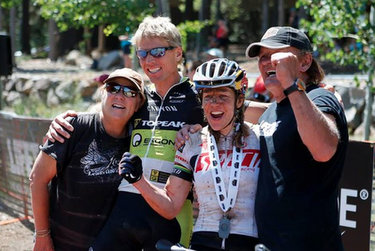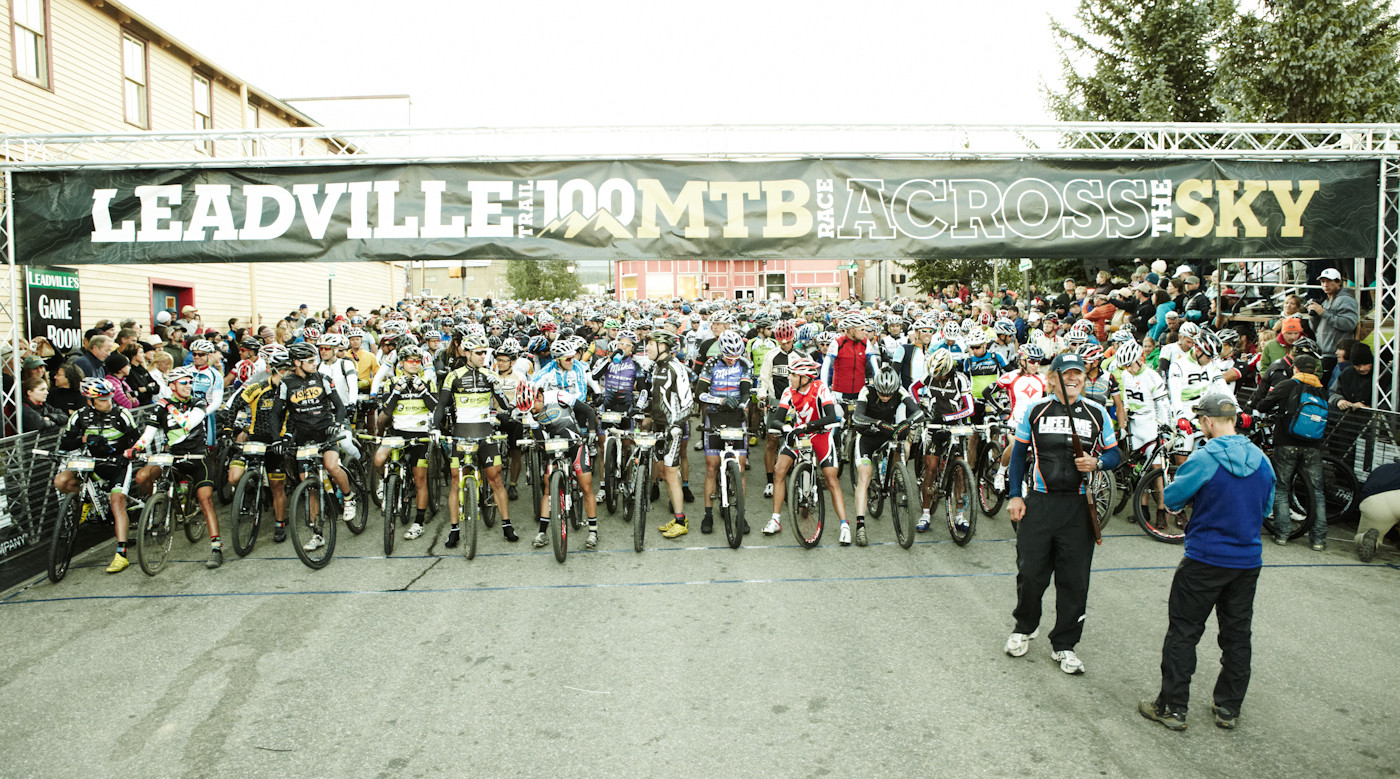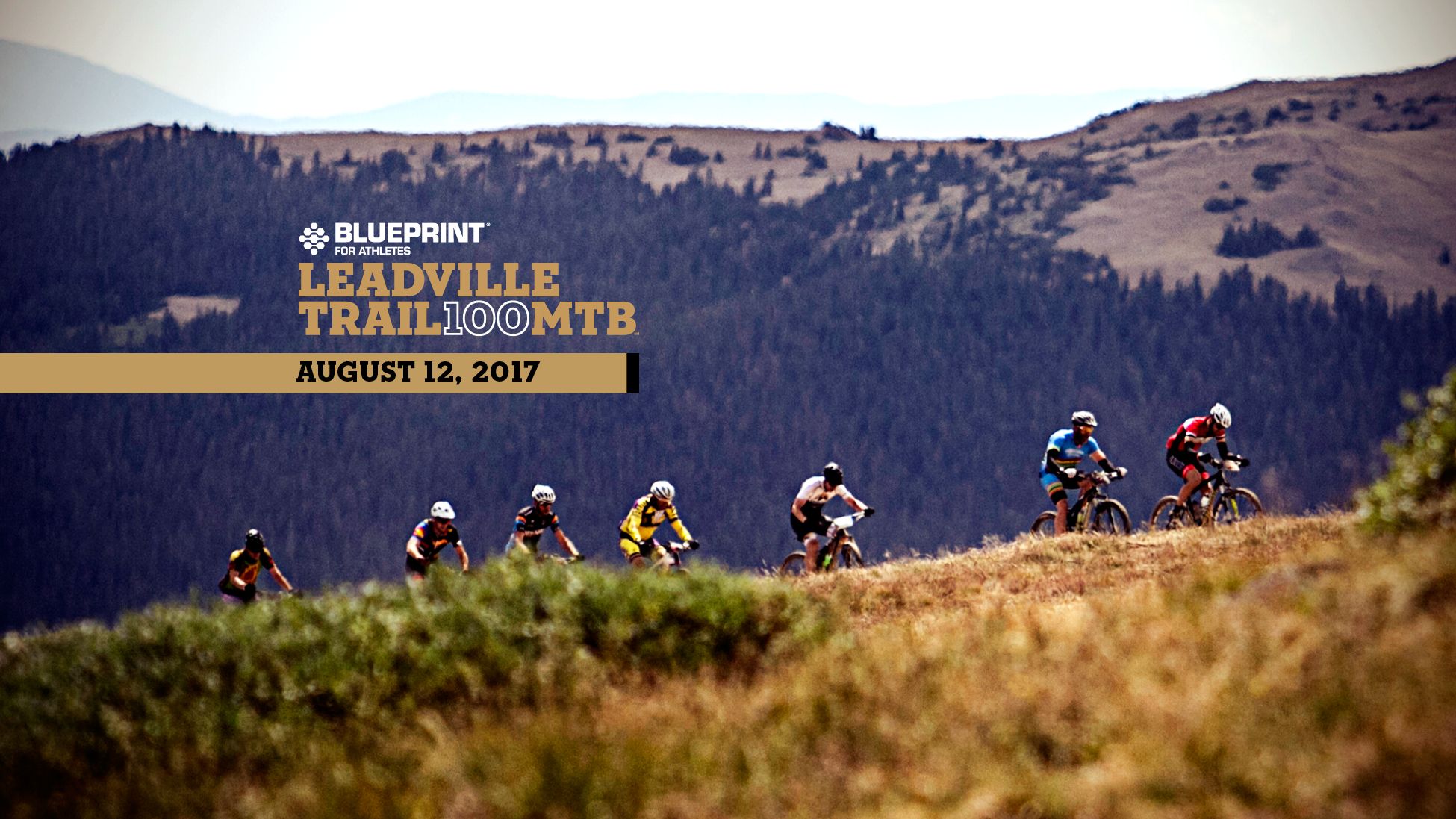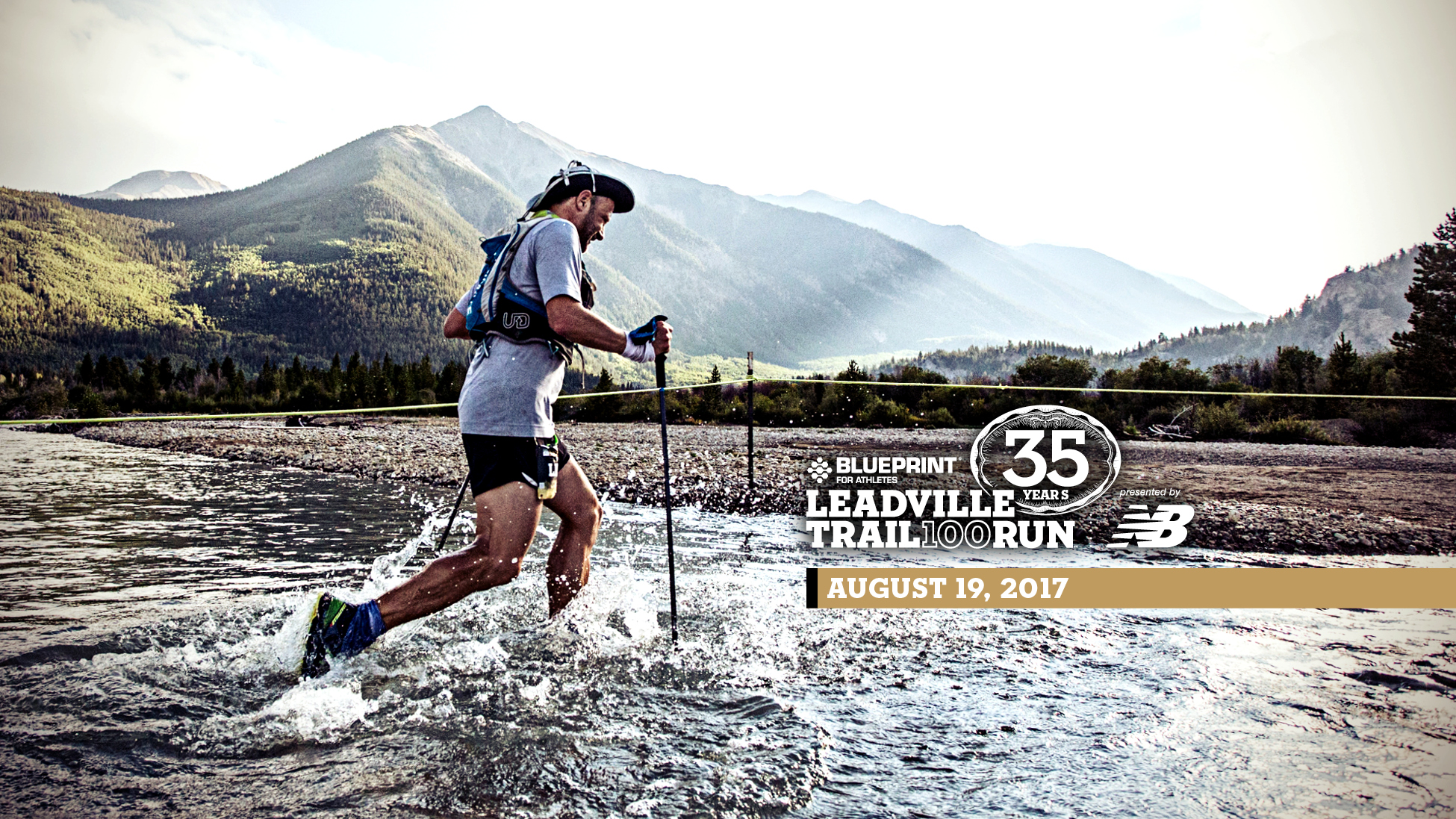
Dispatches from Columbine: The Final Details
By Rebecca Rusch and Dave Wiens
At the culmination of your months of hard work and thoughtful preparation for the Leadville Trail 100 MTB, we’re here to offer some final words of wisdom about everything from travel and tapering, to knowing the course and prepping your crew.
The Leadville Trail 100 MTB is bearing down on you like a locomotive dropping down from the top of Fremont Pass. Your training is pretty much in the hopper; there’s not much you can do now to get any fitter. At this point it’s all about bringing the details together and being prepared so that you sleep well the night before the race, wake early, eat some breakfast, head for the start line and calmly embark on one of the most challenging days of your life.
But before we move on, take just a second to revel in the view. You’re here. You made it. For this weekend, you’re living the dream. Enjoy.
Piece of Advice #1: Don’t Get Stressed Out by Travel
Rebecca: You should already have an arrival and lodging plan. Travel can be just as stressful on your body as doing repeats up Columbine, so commit to doing your best to make your travel stress free. I’m notorious for packing at midnight before a 6 a.m. flight. Don’t do that. Pack your bike, clothing and supplies well in advance so it’s not looming and adding stress. Get a good night’s sleep before travel day. Hydrate, eat well (even if this means packing your own food) and wear compression socks if you have them. Most of all, don’t let the annoyances of travel (like TSA inspections, traffic or delays) get you all worked up. Save your energy for the race and arrive in Leadville as relaxed as possible.
Dave: Before I dive into travel, I want to briefly acknowledge your Leadville experience and what your expectations, goals and aspirations may be. All my races were about me being on a mission and my crew (Dan Crean in 2003, Ryan Palmer in 2004 and my wife Susan from 2005 to 2010) was part of that mission. I live two hours from Leadville, so it’s very easy travel there, and, while Leadville is a great place, I’m familiar with it since I’ve been going there since I was a kid. In other words, the one Leadville experience I’m focused on when in town is the race.
But there may be much more to your LT100 experience than just racing your bike on Saturday. It may be your first trip to Leadville or to Colorado. You might be traveling with family or friends and staying in the area for more than the weekend. They may want to soak in every part of the experiences surrounding this event, without putting a ton of emphasis on the outcome of the race.
So, on to the subject of travel: Get there, as you can, when you can. With all travel, planning is everything. For this event, accommodations are key. In 2003 we secured a last-minute reservation in a less-than-quiet hotel. It was hardly ideal. If you have planned ahead, you might have one of the amazing properties in or near Leadville. As the race has grown, accommodations get snapped up more and more quickly. Many racers stay outside Leadville in Buena Vista, Copper Mountain, Vail, etc.
Travel is inherently stressful. Expect delays and adversities, but choose to not get stressed out. I always made the drive to Leadville the morning of the meeting and planned to arrive for the final 30 minutes or so of check-in, and then I would stay for the meeting. In 2010, I was already running late and finally had the whole family and everything all loaded up, Beverly Hillbillies style, in the old Suburban. I turned the key and…click, click, click. Dead battery! Just a little blood pressure raiser! We made it to check-in and the meeting, but I didn’t need that extra stress. Just try to be as prepared as you can and take what comes with a smile. Eventually you’ll get to Leadville!
Piece of Advice #2: Make Sure Your Bike and Gear are Race-Ready
R: Don’t wait until the night before to switch out the gears you’ve considered changing for months. I like fresh tires for the race, but I put them on a week or so in advance to be sure they hold air and are seated well. A full bike tune prior to the race is key to making sure that the cables, bearings and bolts are all clean and functioning properly.
At this point, after all the miles of training, your bike should feel like an old friend. Updating things like rubber, grips and bearings is great, but don’t make any changes that alter the fit or that you can’t test out in advance of the race. Your bike is the essential tool you need to get you to the finish line, so make sure it’s purring and in perfect condition well before you travel to Leadville. I always bring a few extra parts and pieces as insurance against travel dings or pre-race mechanicals.
D: Your bike should be dialed in and 100 percent race-ready. This means that either you (if you know what you are doing) or a reputable mechanic has gone over it with a fine-tooth comb at least a few days out from the race and that you have settled on tire selection, gear selection and other variable aspects of your bike setup.
If you traveled with your bike on an airplane, you may want to have a mechanic check it out once you get to Leadville. Bikes have a funny way of getting out of whack when they are taken apart for travel and then reassembled. And if you ride your race bike on the course the day before the race, know that you might be riding in the rain or mud, or that you could flat your new tubeless tire or crash and break something. Be prepared to work on your bike the night before the race, along with all the other items on your pre-race to-do list (cooking and eating dinner, filling your bottles, pinning on your race numbers, strategizing with your crew, etc.). I used to ride a section of the course the day before the race that included the Powerline descent, but I would bring a spare bicycle. This is not always an option, especially if you are flying into Leadville.
Piece of Advice #3: Strategize Your Race-Day Support (With or Without a Crew)
R: If you have family or friends coming to Leadville with you and crewing for you, take some time to prep them for race day. Go to the Leadville Race Series retail store and buy a course map. It has the driving and riding courses and is essential. Plan your crew’s location at Pipeline and/or Twin Lakes. If you have time, drive to these areas together in advance and make a plan about where your crew will station themselves. Keep in mind that there will be thousands of other people at these aid stations on race day, so your crew must arrive early and be a little bit flexible. Discuss your race plan with your crew, so they know how to help you: What food and drink do you want at the aid station? Will you stop or just roll through? Give them time estimates so they know when they can expect to see you. Show them all of your race food, extra clothing and bike gear so they are familiar with everything. Talk about what they will be wearing so you can see them easily. Costumes are encouraged! Educating your crew will save you time on race day and those precious minutes could make the difference between a buckle and no buckle.
If you are racing without a crew, don’t stress. The neutral support at this event is really dialed in, so riding without a crew is totally doable. Check out the course map and know the locations of and mileages between the neutral aid stations. The aid stations will be well stocked with a variety of GU products, Herbalife, plain water, regular food and energy foods. Plan your food/water carrying capacity and how much time you think you will take to get to each aid station. If you have specific foods or potions that you must have for race day, carry those things with you for the entire race and just add water or other essentials from the aid stations.
D: Rebecca covers crewing really well above. I would add just a couple things. First, pack and organize everything you might need at an aid station in a manner that won’t be confusing to your crew. You should also make it somewhat portable in case they have to walk any distance from their car to get to their spot at the aid station. I would organize my stuff this way:
- A satchel to be handed up to me, such as bottles, gels, a Powerbar, PB&J bagel, tubes, a quickfill and an adapter (I only took what I needed, but all options were available depending on what had happened out on course).
- My emergency bag, containing most of my warm clothes (gloves, rain jacket, extra layers, etc.), as well as an extra pair of shoes, a seat and seat post, and a good assortment of tools.
- Spare wheelset, aired up and ready to go, plus a floor pump.
- Finally, my other bike, sans seat and seat post and wheels, left in the car — close enough to get to in case I needed other parts from it. You can switch out anything except frame and fork.
Only once did I ever get into anything other than my satchel and that was 2009 when I got into the emergency bag for a pair of warm gloves. Also, as Rebecca suggests, go with your crew to the actual spot so they have been there, know it and know how to get there. Just as you pre-ride the course, you and your crew should preview the aid stations.
Piece of Advice #4: Know the Course
Knowledge is power. Familiarize yourself with the course profile.
R: Many riders have been able to get out on the course to scout, which really helps you wrap your head around what you will be expected to do on race day. The recent Camp of Champions was an awesome opportunity to just ride up and down some of the climbs, and the overwhelming majority of riders at camp felt less intimidated and more confident about the course after riding it a bit. There is a lot of hype around this course and — I’m not going to lie — it’s hard. However, it is also doable, so instead of avoiding staring the monster in the eye, gain as much course knowledge as you can so it doesn’t seem so daunting. If you don’t have time to get out and pre-ride the course, don’t despair. I rode the LT100 in 2009 completely cold with the course profile taped to my top tube. I had studied up on split times and how long the climbs were, but I had not ridden one inch of the course and I still came away with a solid time and the women’s win. You can gain great knowledge by reading other people’s accounts online and familiarizing yourself with the course profile. You can also look at past results and review split times to key points on the course and use those to track your progress.
D: I am an advocate of knowing the course but not overriding it in the days leading up to the race. I want to be mentally and physically fresh for the course. I would never see how fast I could climb or ride any section of the course during training. Save that for race day! The Leadville course is not overly complex and, once you’ve hit the top of Columbine, you have a pretty good idea of how it will ride going the other way. If you cannot pre-ride, try to memorize the general profile so you’ll have some idea about what you’ll encounter: downhill start to the dirt; approach to St. Kevins climb and the St. Kevins climb (the first of five major climbs in the race); pavement to the Sugarloaf climb (second climb); the top of Sugarloaf signals the Powerline descent; the pavement signals flats, rollers and short climbs for the next 20 or so miles to and through the Twin Lakes aid station; after Twin Lakes comes the undulating approach to the Columbine climb (number three of five climbs); once you’re in the trees, you’re climbing Columbine. Once at the top, you should know everything going back except the final small-but-punishing climb up the Boulevard to the finish.
Piece of Advice #5: Taper, Rest and Respect the Altitude
R: At this point, your hard training is done and it’s time to relax a little and enjoy some extra hours in the week to tend to bike maintenance, family commitments or just enjoying the summer. My coach used to say that by a couple of weeks out from an event, there’s nothing I can do except blow it by not resting. Your fitness gains have already been made. Now you just keep the engine firing and get ready to enjoy the effects of all of your hard work.
Generally, a taper for an important event is a couple of weeks during which training volume is decreased, but the intensity of training remains high. This means shorter workouts, but still some brief, sharp intervals and pickups to keep your legs alive and the blood flowing. It takes patience to taper, but trust me — it’s worth it. By all means, ignore me if you have a tried-and-true program that works or you have a coach advising you. This is just what I do.
Sleep is also one of the best things we can do to recover and really top off the tank. You might not sleep well the night before the race due to nerves and the really early start. That’s okay as long as you’ve banked some good, consistent sleep leading up to the event. Prioritize getting to bed early if you can. This is the simplest (and most enjoyable) way to be at your best.
How and when to acclimate is one of the big questions people always have, because Leadville is high. Really high. There are two theories that make acclimatization really simple. First, it takes nearly a full three weeks to acclimatize properly. Two weeks is fine. Ten days is okay. Research and experience have shown that three to six days is the worst block of time in terms of your body’s response to altitude. During that period, you are not yet sleeping well and your body is working hard and using energy make more red blood cells. My experience is that I always feel flat during those initial few days at altitude. If you don’t have 10 days to three weeks to spend at altitude, then the second supported option is to arrive fewer than 48 hours before the event. In this short time, your body hasn’t yet realized what you are doing to it and hasn’t started to work overtime yet. I’ve used both strategies in Leadville with success.
The bottom line is that you’ll get there when you get there and you’ll race as hard as you can. Just respect the altitude with hydration and proper pacing and the rest will fall into place.
D: Whenever I put together a training plan for Leadville, I’ll structure the final week of the race first and work backward from that. I have a structure that I like for that week and I’ll stick to it. For my racing this year though, I have made an adjustment. I don’t want to rest completely the day before the race but I don’t want to ride too hard or too much. I have started resting for two days now (used to be one), two days out. So, working backwards, my final week looks like this: race on Saturday, ride on Friday, and rest Wednesday and Thursday. Tuesday I’ll do a steady sort of an endurance ride, and on Monday I’ll do some intensity (intervals).
Twelve to eight days out from the race, I’d put in a block of four hard days in a row. This block was linked with the final week’s plan above by two to three days of easier riding. That’s my peaking cycle and my taper. It’s a plan I have developed over the years and is successful for me. Everyone is different and as Rebecca stresses, there are a variety of training programs that lead to success. If you have something that works or you are working with a coach, stick with it. More than anything, this just gives you an idea of the importance of having at least some sort of a plan for how you’ll ride as the race approaches.
As for altitude, I’ve heard all kinds of things. My best advice for the altitude is to not stress about it. Don’t plan your travel around it at the expense of having a really great Leadville experience. I think solid training combined with careful pacing, careful nutrition and hydration, plus a great attitude (about everything including the altitude!) will do more for you than sleeping in a chamber (or arriving in Leadville at 5 a.m. on race day, or getting there at Easter, or…) ever will.
See you in Leadville!



